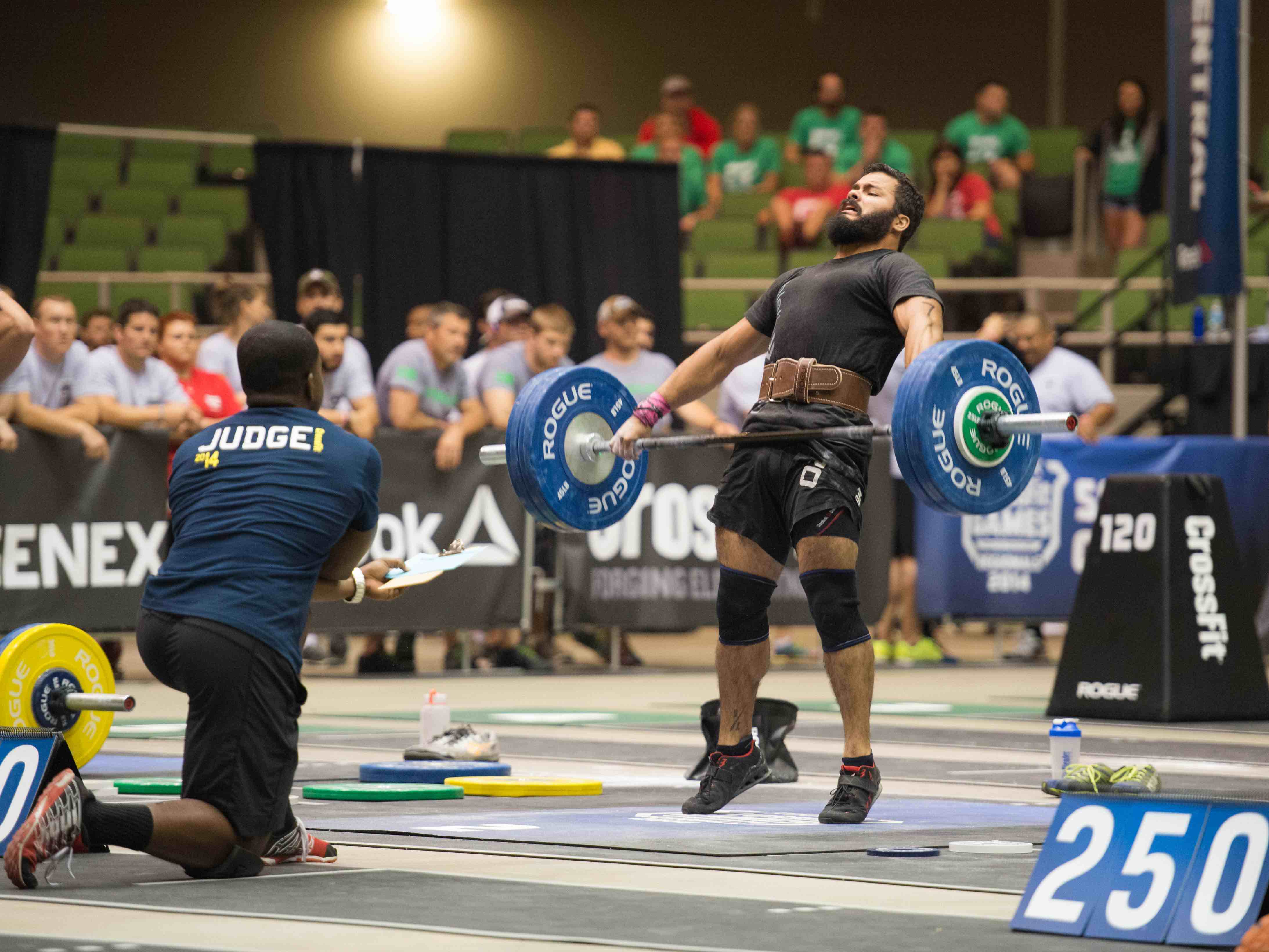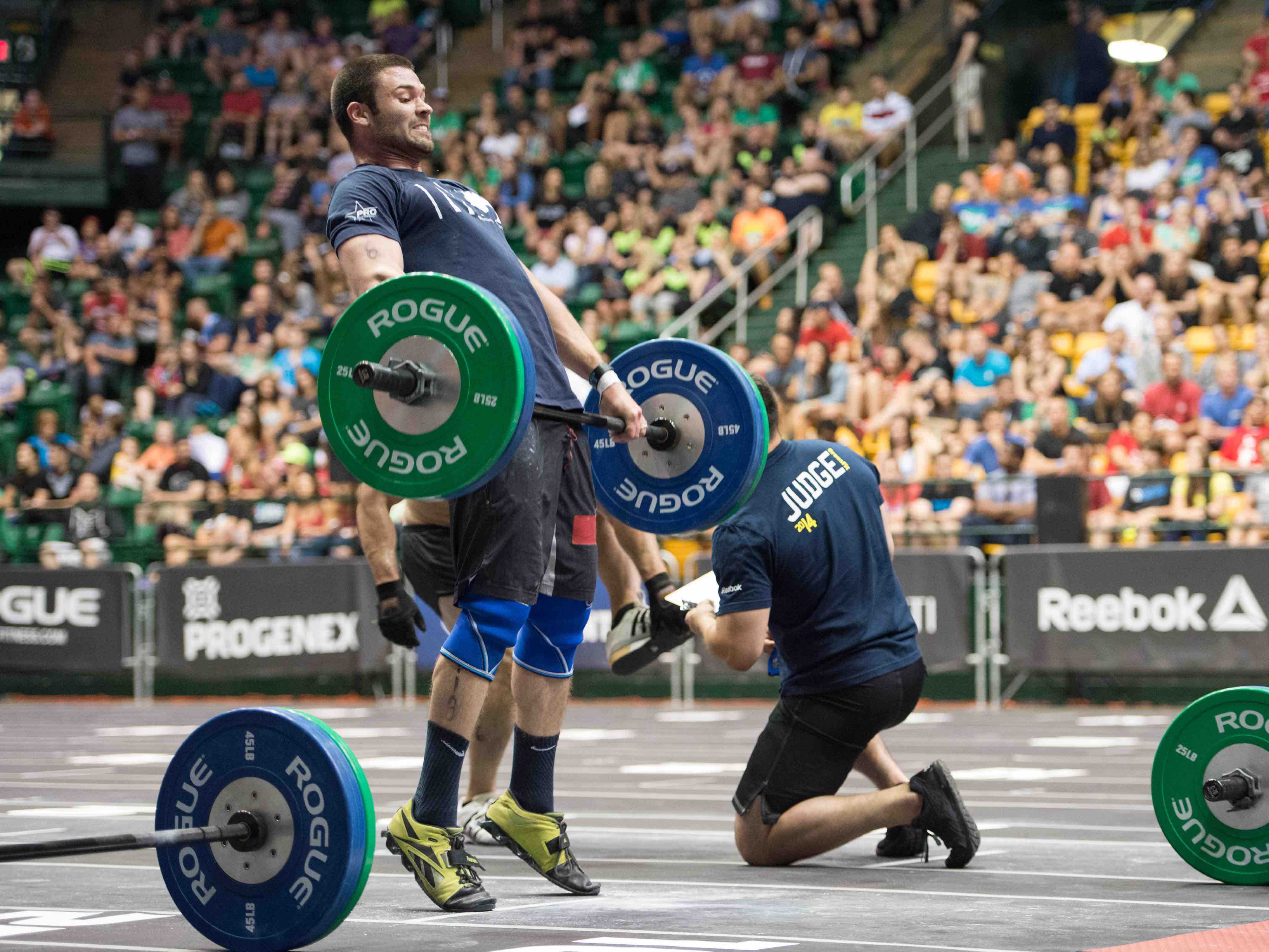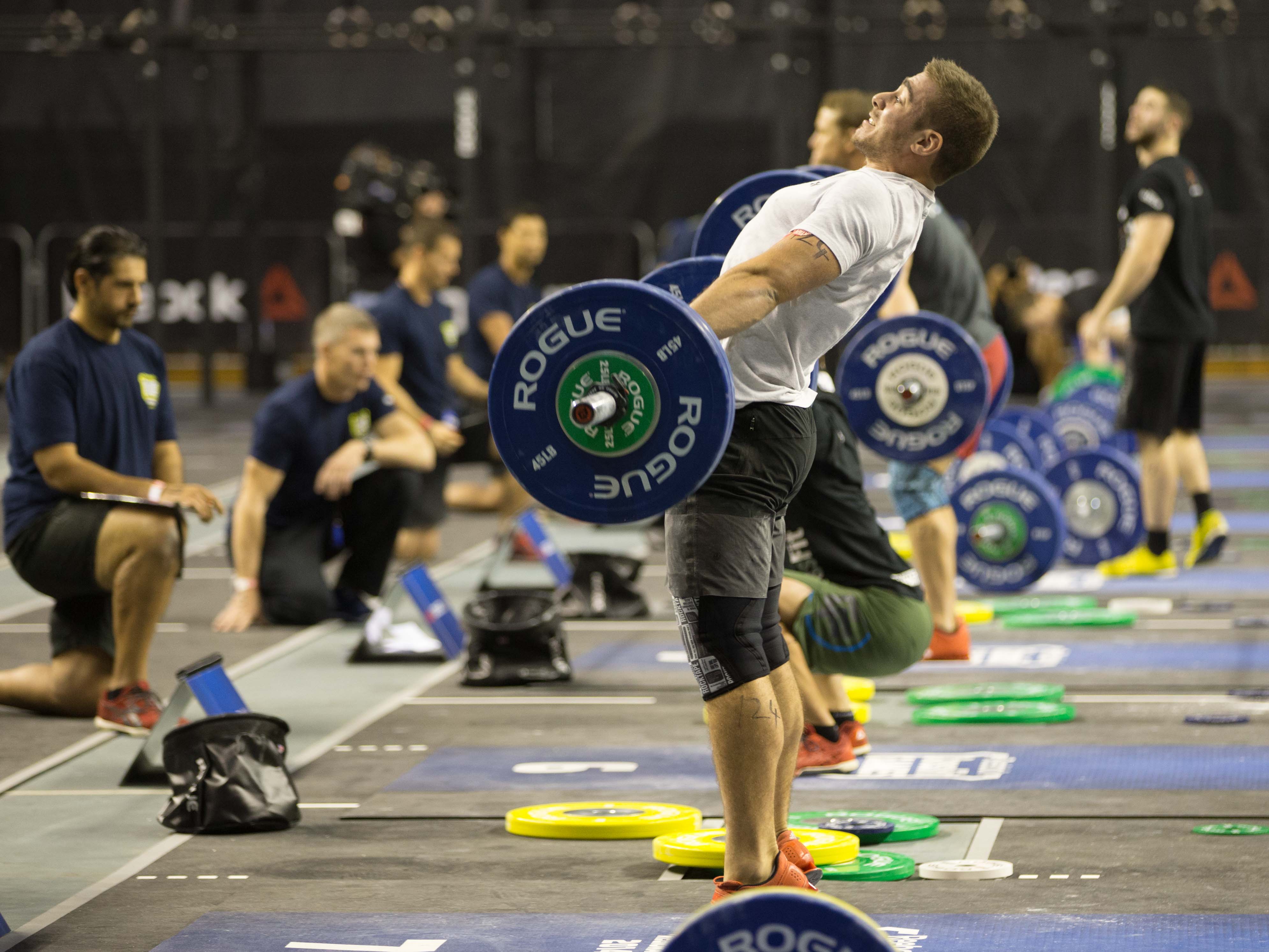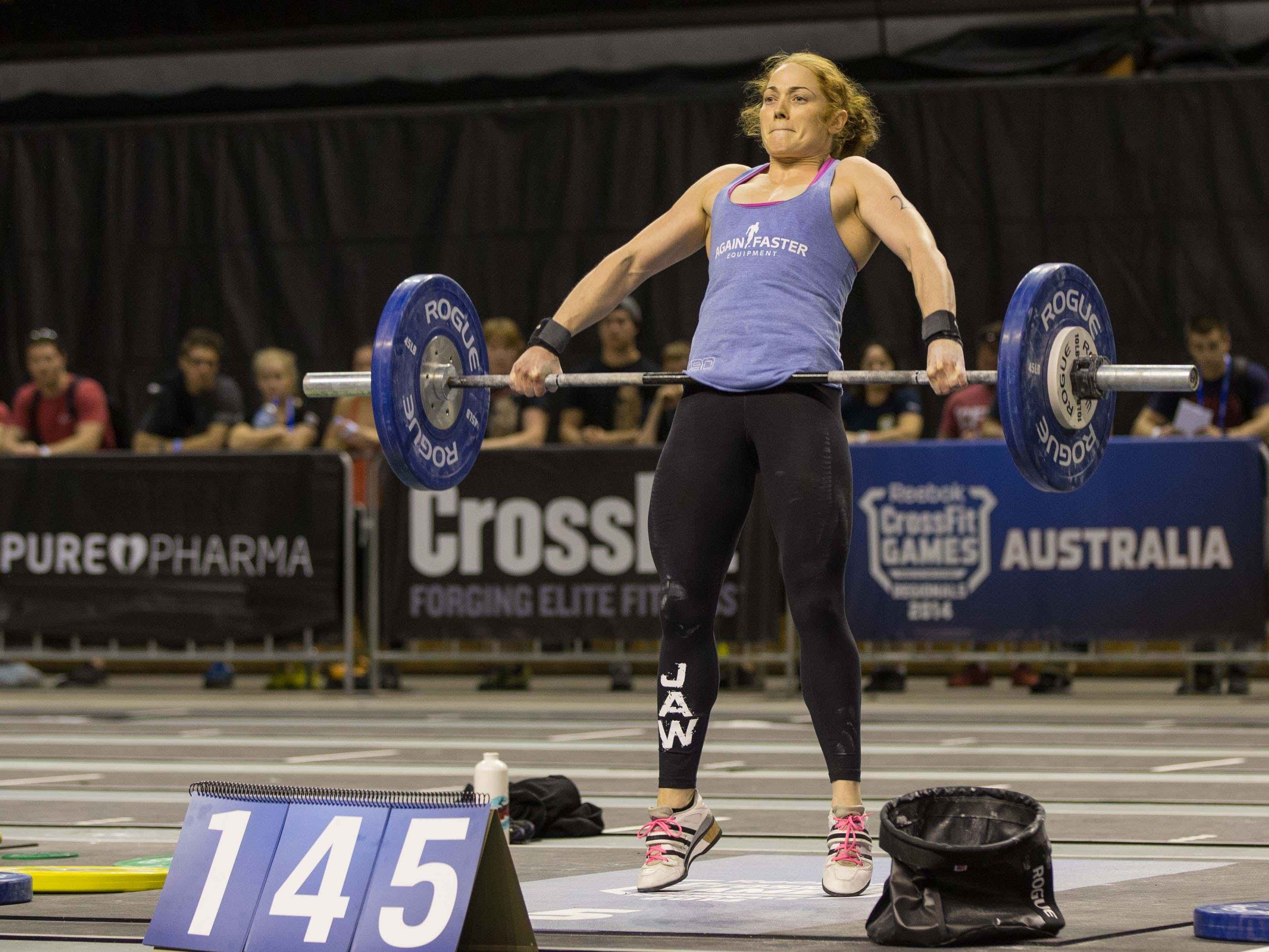
Mike Burgener offers quick tips to correct errors in the snatch and clean and jerk.
Just as it’s possible to correct weightlifting errors, it’s possible to cause errors when cues go awry.
Take, for example, the oft-used cue “finish!” What the coach is looking for is a natural position created by perfect balance and unbridled aggression. In a snatch or clean, a profile shot of the finish will show a lifter at full extension—ankles, knees and hips—with the body completely rigid.
Once the finish position is hit for just a fraction of a second, the lifter must move around the bar to the receiving position. “Around” is the key word.
“If he goes straight down, he’s going to hit himself in the face or he’s going to intuitively swing that bar around his face,” said Mike Burgener of CrossFit Weightlifting.
A rigid finish position with balance between bar and athlete will allow the lifter to efficiently and quickly move around the bar to the receiving position. In that finish position, a straight line can be drawn from the foot through the hips and torso to the head. This line is not vertical but leans backward slightly.
 Great balance throughout the first and second pulls creates the optimal position from which to start the third pull around and under the bar.
Great balance throughout the first and second pulls creates the optimal position from which to start the third pull around and under the bar.
The position is sometimes called “layback,” but Burgener doesn’t use that term.
“’Layback’ is a misconception,” he said. “You’ve got to understand that that position is nothing more than the body being rigid. You’re up on your toes really because you’ve driven so hard with your legs. That body now comes down and around the bar.”
 While this position is aggressive, the hips are forward and the shoulders are back, putting the bar past the toes. This can create an inefficient, loopy bar path.
While this position is aggressive, the hips are forward and the shoulders are back, putting the bar past the toes. This can create an inefficient, loopy bar path.
The proper finish is naturally created by precise balance in the first and second pulls and an aggressive leg drive through the full foot to create extension of the ankles, knees and hips. Some coaches will improperly attempt to demonstrate this position with PVC or light barbells, thrusting the hips forward and pulling the shoulders back while balancing on their toes in a reverse C shape. It’s very common for athletes to “practice finishing” by using this position, which is not seen in a good lift.
In this inefficient system, the body is not rigid because the hips have been thrust forward to help the coach or athlete maintain balance in a contrived position. The error becomes more pronounced if athletes are aggressive: The more the shoulders go back, the more the hips must go forward. If an athlete recreates this bowed position during a lift, it’s likely the hips have moved horizontally during the scoop and caused the bar to be flung away from the athlete when the hips extended at the end of the second pull.
 As in the previous shot, this position is not optimal. It’s likely the lifter’s weight shifted forward during the first and second pulls, and he must now throw his shoulders back to pull the bar toward him and complete the lift.
As in the previous shot, this position is not optimal. It’s likely the lifter’s weight shifted forward during the first and second pulls, and he must now throw his shoulders back to pull the bar toward him and complete the lift.
Burgener has a better way to demonstrate the proper finish position, and it involves standing with your back to a wall: “You make your body rigid—you stand at attention—and then you … step an inch, maybe and inch and a half away from the wall and fall into the wall.”
To help athletes find the position without a wall, Burgener has stood behind lifters with his hands about one inch away from their shoulders. He’ll instruct them to stiffen the body and then lean back into his hands—they have to trust him, of course. From there, he adds a barbell.
“‘I want you to put it at the high hang, and I want you to do a jump 1 millimeter off the ground, and I want your shoulders to finish into my hands.’ So now when they jump, their hips go down and up and their shoulders have to hit my hands. I’m in the same position so they get that feel of what that position feels like under load,” he explained.
Keep in kind that the finish position looks slightly different as loads increase. Lighter loads will produce a finish position closer to vertical, while very heavy loads will produce a finish farther back from vertical. It’s all about maintaining balance in the feet: Correct balance will naturally create the correct finish. That balance is first found in the set-up. If the bar-athlete system is not balanced throughout the first and second pulls, a proper finish is all but impossible due to improper weight distribution or poor bar path.
 A good finish starts with a good set-up. Mistakes early in the lift will make it very difficult to achieve the correct position.
A good finish starts with a good set-up. Mistakes early in the lift will make it very difficult to achieve the correct position.
If the lifter stays precisely balanced as the bar moves from the floor, past the knees and to the mid-thigh, the athlete will naturally bring the hips to the bar in the scoop and then hit the correct finish position unconsciously. That, in turn, allows the lifter to efficiently punch under the bar at the right moment.
“You have to know what finish is. That’s another position,” Burgener said. “Stance and grip are easy, but there’s a million positions that you have to hit in the snatch. And you know what positions are affected by? The feet.”
About the Author: Mike Warkentin is managing editor of the CrossFit Journal and founder of CrossFit 204.
Photo credits (in order): Brian Sullivan/CrossFit Journal, Thomas Campitelli/CrossFit Journal, Matthew Townsend/CrossFit Journal, Matthew Townsend/CrossFit Journal.
No comments:
Post a Comment